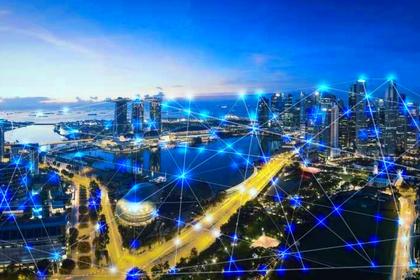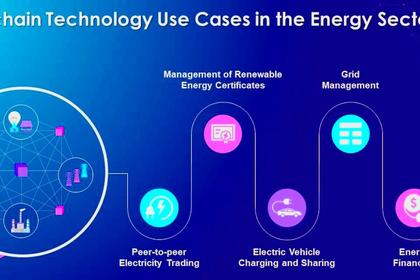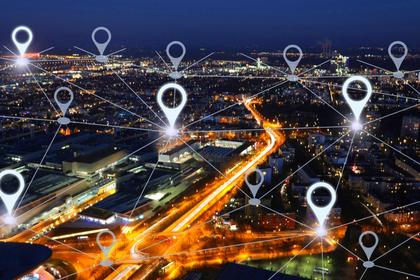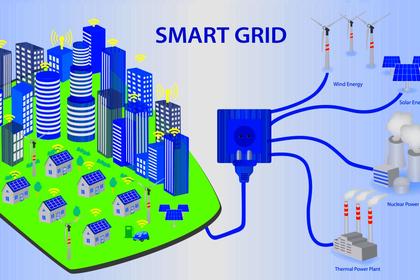
DIGITAL COMMUNICATION NETWORKS FOR ENERGY

By JEAN JONES Director of Product Marketing, Anterix
ENERGYCENTRAL - Sep 25, 2023 - Utilities collectively are working hard to ensure their critical infrastructure is ready to meet future grid modernization, resilience, security, and clean energy requirements. Over the coming years, utilities will see rapid growth in data usage driven by an increase in network capacity, performance, and new applications. Technology and the communications network advancements that support the grid play a key role in helping to meet network challenges while also mitigating risks, increasing customer satisfaction, and improving operational metrics.
As utility operations become increasingly complex, and the grid more digitized and automated, a private LTE network is becoming an integral part of the utility critical data infrastructure to support required increased data speeds, capacity, and security. The need for private wireless broadband networks to make the grid smarter, while improving security, resiliency, affordability, and automation is more critical than ever.
The Case for Private LTE as the Foundation for Utility Communication Networks
Utilities have a long history of installing and operating their own communications systems. From distance relay protection on transmission lines and mobile radios, to large SCADA and corporate data networks, communications are a vital link in the chain-of-system control that utilities must maintain, especially across field operations. To achieve that control, utilities build, own, and operate communications systems on a foundation that includes fiber, digital microwave, and commercial (or public) networks. However, utilities can ensure the coverage, performance, reliability, resiliency, and cyber security of these networks when they have end-to-end control over them. Private LTE wireless technology is an optimal choice because utilities can design a private wireless broadband network that works with their current system but expands upon its benefits. With a private LTE network, utilities can communicate more securely with devices anywhere in their service territory and control the devices permitted on their network. They also can design the private LTE network to withstand long power outages, mitigate natural disasters, and reinforce it to prevent cyberattacks. Built on a global standard, private LTE networks open the door to a future in which sensors, controls, and advanced technology can be installed anywhere on the grid. Mobile workforce, drone inspections, advanced analytics, wildfire mitigation, and a host of other use cases and grid-enhancing technologies can be realized.
900 MHz private LTE is becoming the broadband wireless standard for utilities due to its ability to offer visibility, control, quality of service, reliability, and resiliency all the way to the grid edge which is essential for next level grid transformational solutions.
900 MHz private LTE benefits include:
Security, Privacy, and Control: Complete control, not only of the network design, build, and operation, but also of the end-to-end system security, access, and data visibility, and prioritization. The data never leaves the private network or traverses the public internet. Private LTE can be architecturally and fundamentally more secure than commercial networks and provides utilities with control access to both the network and devices through user authentication and encryption capabilities. Customizable layers of security can also be added.
Reliability and Resiliency: Reliable and resilient communications across a service territory enables greater control of grid operations. Thus, utility communications must meet a high standard: hardened to prevent compromise by human actors and natural disasters, reliable to work even under emergency conditions, and resilient to quickly recover from setbacks and support power restoration efforts.
Capacity and Scalability: A communications platform built to deliver capacity to meet current and future connectivity needs and use cases is a must for utilities. With private LTE, utilities can deliver more and faster connectivity demanded by clean energy solutions and smart grid applications. Built on a global standard, private LTE can provide bandwidth and scalability for the growing number of devices supporting all Field Area Network (FAN) requirements.
Future-Proof Innovation: Private LTE is built using global 3GPP (Third Generation Partnership Program) standards that can provide a future-proof investment for years to come.
Reduction of Costs: Several factors contribute to a lower total cost of ownership (TCO) and improved business case. The 900 MHz band features increased coverage area per cell site due to advantageous propagation of low band spectrum as compared to higher bands. Lower site infrastructure density can lead to lower capital requirements. The convergence of legacy single purpose application networks into a unique standards-based platform can eliminate costly O&M and redundant capex. 900 MHz can be an economical solution compared to fiber to reach the edge of the grid. With a single platform, devices can be installed quickly anywhere on the grid at no additional O&M or capex connectivity cost.
The Unique Benefits of Private LTE for Grid Modernization
900 MHz private LTE is the ideal choice to support the breadth of use cases driven by the most critical needs of the grid, and to support clean energy and DER requirements.
Here is an overview of some of the use cases supported by a 900 MHz private LTE network.
Energy Supply and Load Management
Demands on the aging metering network are accelerating, driven by increasing operational costs, the need for more bandwidth, higher reliability, and better security. A private LTE network can deliver the performance, security, and capacity needed for evolving AMI systems. With private LTE, lower latency and quality of service control allows the utility to prioritize traffic to fit their requirements. A private LTE “Under Glass” meter can support faster two-way communication between the utility and end users, faster outage response, better fault identification, and ease the challenges of DER interconnection. Utilities can also reduce the incremental cost of endpoint connectivity of traditional solutions, as well as support increasing bandwidth requirements.
Private LTE can replace traditional narrowband links, commercial cellular connection, and other third-party backhaul solutions with a single platform providing connectivity at no additional cost for years to come. Private LTE can provide a utility with the ability to enhance its meter infrastructure without restrictions or bandwidth constraints imposed by a proprietary communication solution. Being standards-based, private LTE facilitates the interoperability of multiple vendors bringing flexibility, scale, and innovation.
Electric Vehicles
With the proliferation of EVs, charging stations, and storage, utilities need to have robust, secure connectivity to the assets controlling EVs and charging infrastructure to manage two-way power flows and maintain control and reliability of the grid. Preventing overload of the distribution infrastructure due to increased demand for charging, the ability to dynamically utilize available EV resources for charging at scale, and ensuring the flow of real time information are critical requirements for the data communications network.
900 MHz PLTE can provide high throughput and low latency connectivity which will allow for an improved V2X bidirectional charging flow and the accurate monitoring of EVs, charging stations and solutions at scale. Private LTE gateway devices allow secure and reliable two-way communications to gain more visibility of real-time information, current production levels, and the availability of resources. EV assets can be fully integrated to the same operational network as the electric grid.
Wildfires
Solutions like falling conductor protection and other innovations that have emerged over the past decade can mitigate wildfire risks, increase customer satisfaction, speed up de-energization, and improve operational SAIDI, SAIFI, and CAIDI metrics. Falling conductor protection helps utilities proactively increase resiliency by de-energizing the broken line before it hits the ground with a near real-time connection. Rapid de-energization of the line can be targeted to specific communities and accomplished through the low-latency and traffic prioritization capabilities of a 900 MHz private LTE communications network. Overall system reliability is not impacted, unlike other solutions like line tripping that can cause false trips. Remote monitoring and control of substation/distribution equipment, remote video surveillance, and supporting emergency response and mutual aid are additional examples of how a 900 MHz private LTE network can help mitigate issues caused by wildfires.
Natural Gas
900 MHz private LTE can provide the ability to rapidly and economically deploy environmental sensors to increase efficiency by improving natural gas infrastructure monitoring that improves leak detection and remote control of gas services. Private LTE also supports the evolution of gas meters to AMI 2.0, enabling meters to become powerful grid edge sensors capable of running many applications in real time, further increasing efficiency and overall control of gas services.
Distribution Automation
Distribution automation systems automatically isolate faults and perform switching to restore and maintain power to as many homes and businesses as possible within seconds. These systems typically utilize three phase reclosers, capacitors banks, MOABS, load break switches, sectionalizing cabinets, and regulators. Distribution automation systems rely on direct or wireless connectivity for real-time feeder condition information to determine the optimal operational configuration during an event. To perform these tasks most effectively, utilities require a secure and reliable communications network connecting these assets. Deploying a 900 MHz private LTE network will allow these devices to communicate seamlessly in real-time and eliminate the costly and complex deployment of fiber.
Street Lighting
Utilities need to manage not only distribution and transmission assets, but also assets such as residential streetlights. Private LTE can be leveraged to provide connectivity to each streetlight, eliminating the need for a purpose-built network for this application. The load management of tens of thousands of streetlights can utilize self-provisioning, real time notifications, smart light scheduling, intelligent dimming, and more. Control and management of these programs can also reduce energy costs.
Mobile Communications
Communications coverage is critical to the effectiveness of a mobile workforce and one that is often overlooked. Today’s mobile workforce can perform more efficiently, respond faster to outages and provide better customer service when connected to a private, highly reliable, and secure communications network. With private LTE, utilities can build their network where it is needed, removing poor signal area concerns. A secure private LTE network connecting a mobile workforce provides the ability to monitor vehicle status and location and aids dispatching in assigning work more efficiently. Real-time vehicle and worker visibility enables quicker response times to customer issues and outages and provides customers with a higher quality of service and reliability.
No matter where utilities are in the evolution of their grid communications network, 900 MHz private LTE is foundational for a modernized grid and can support the data speeds, capacity, and security to enable a modern, clean, and resilient utility communications infrastructure.
Earlier:

















